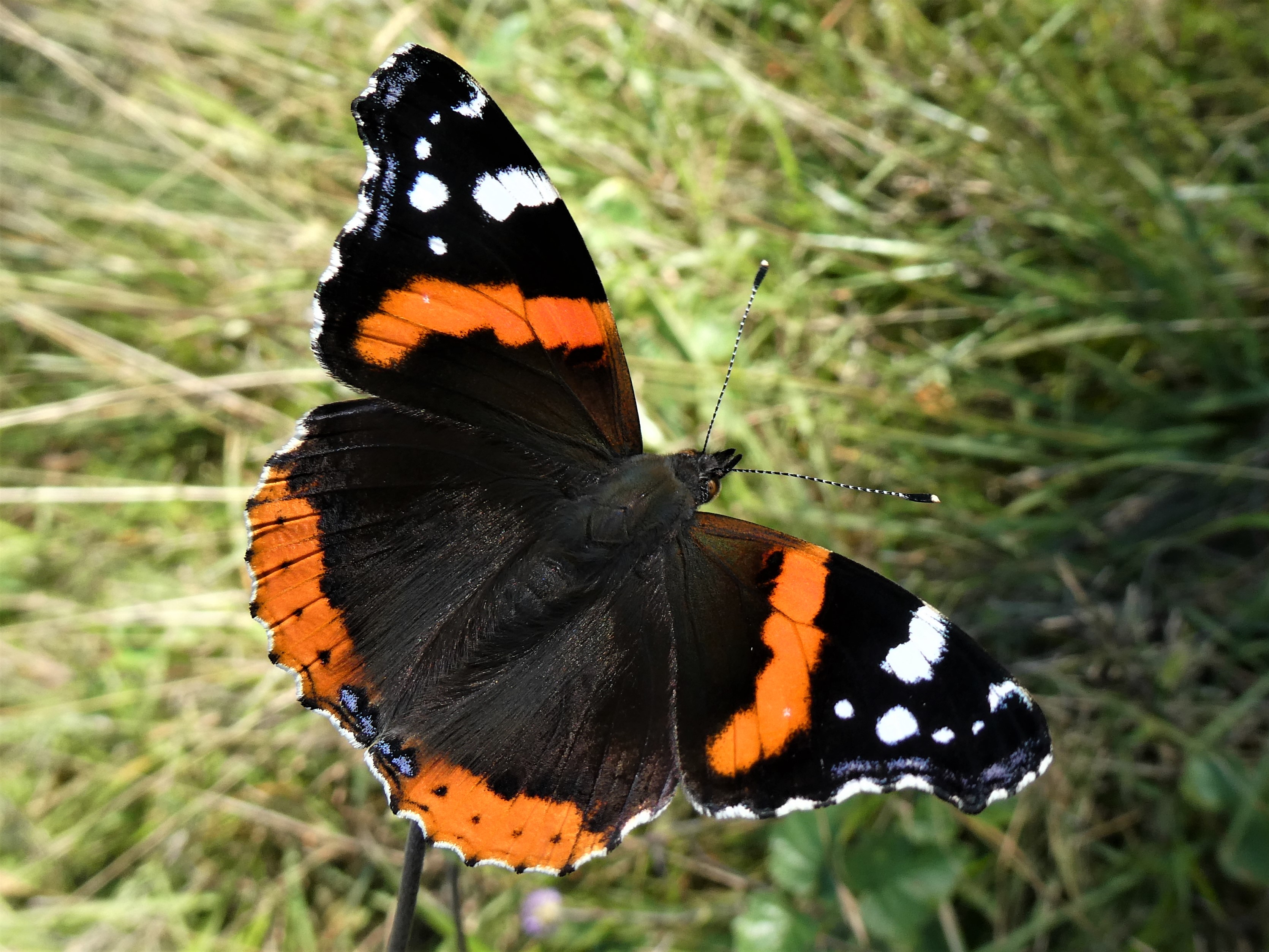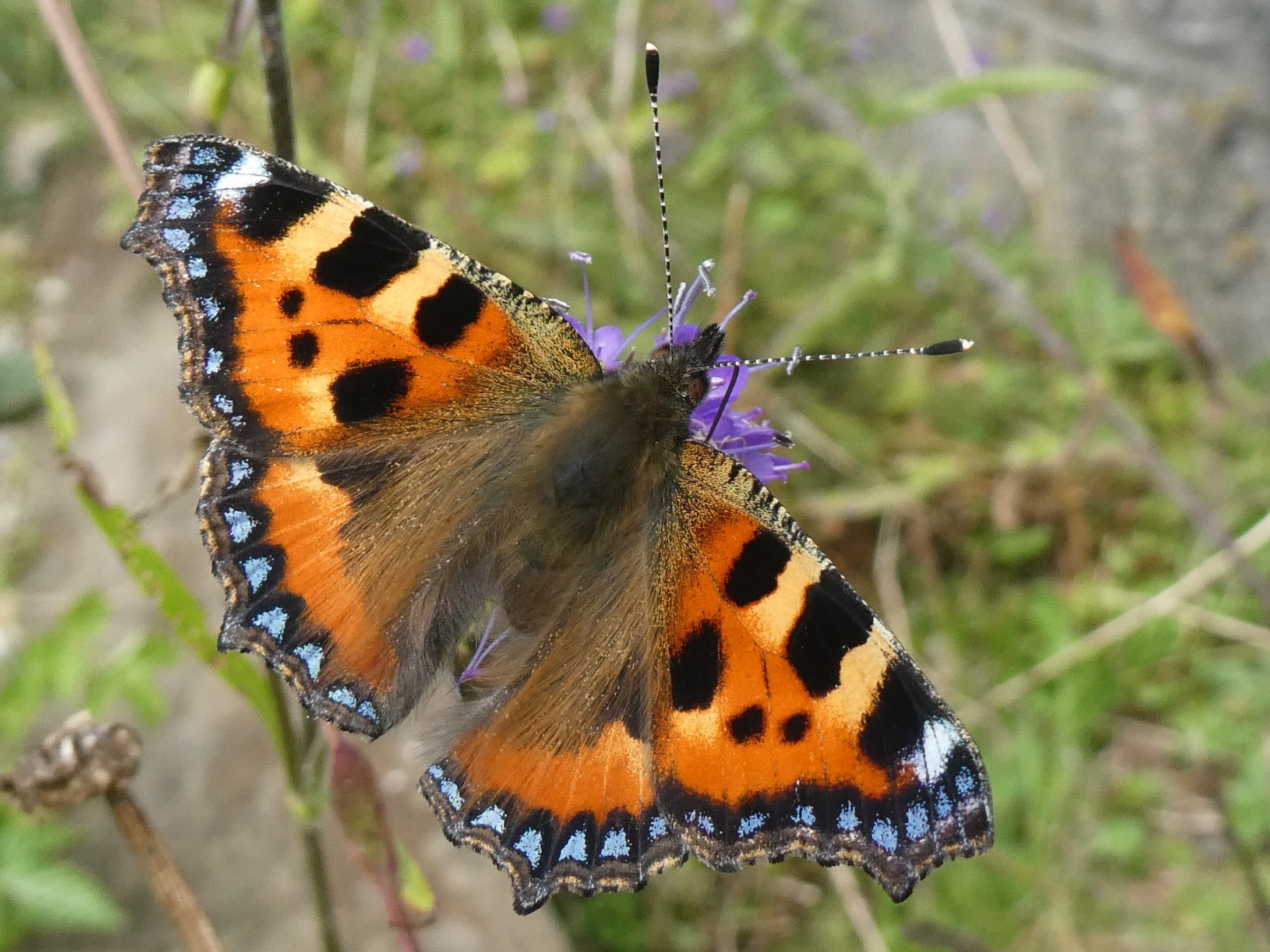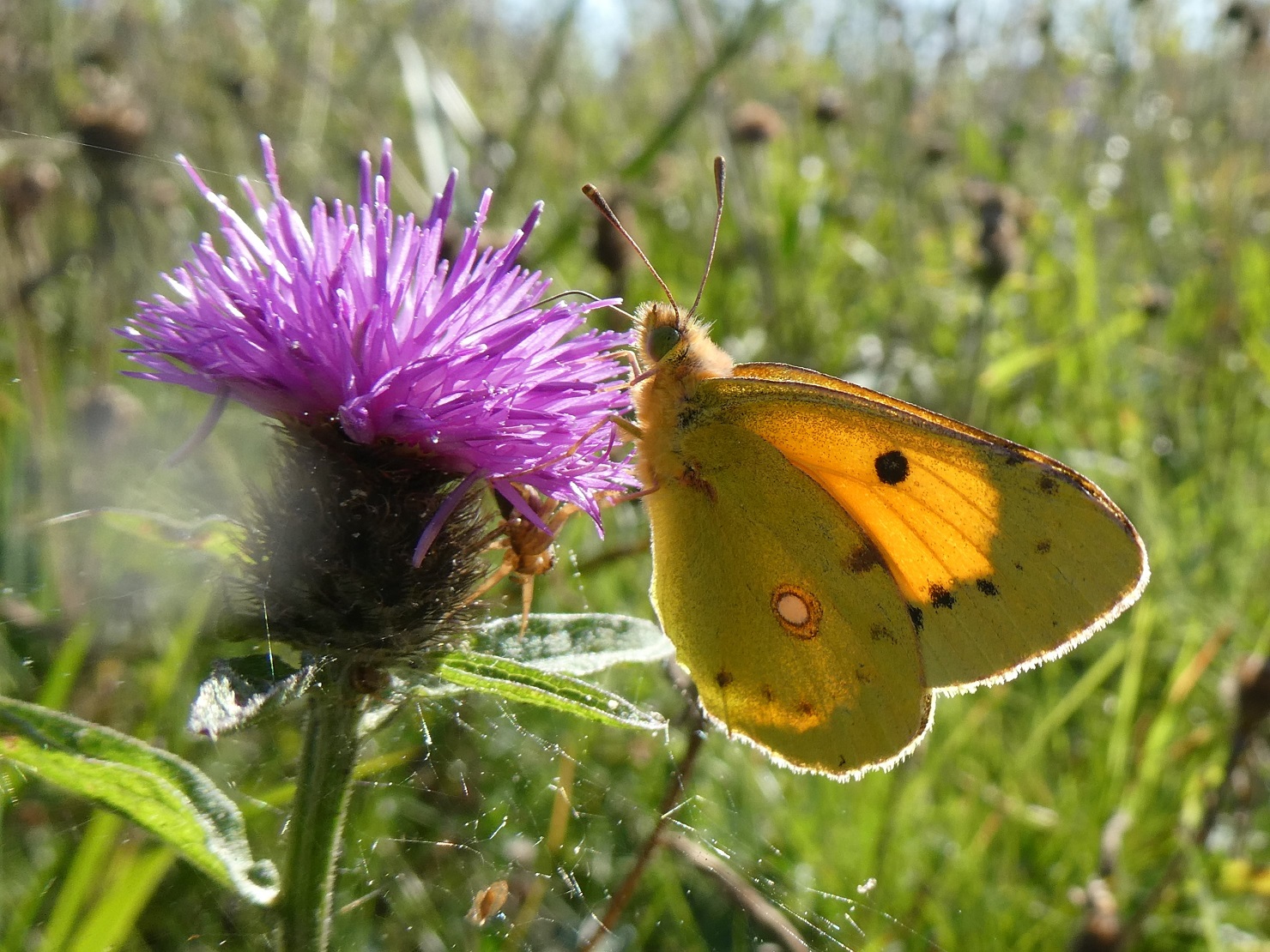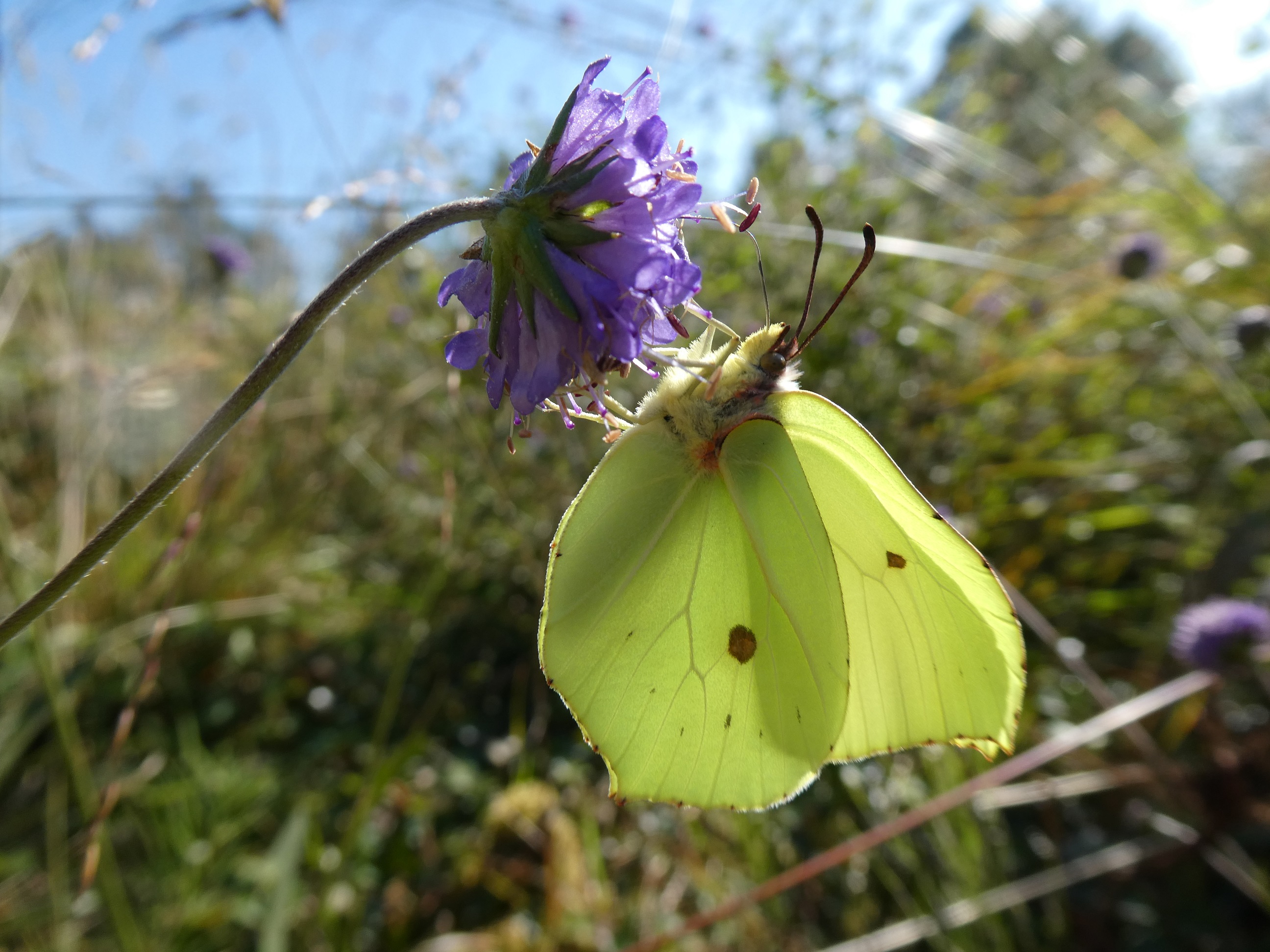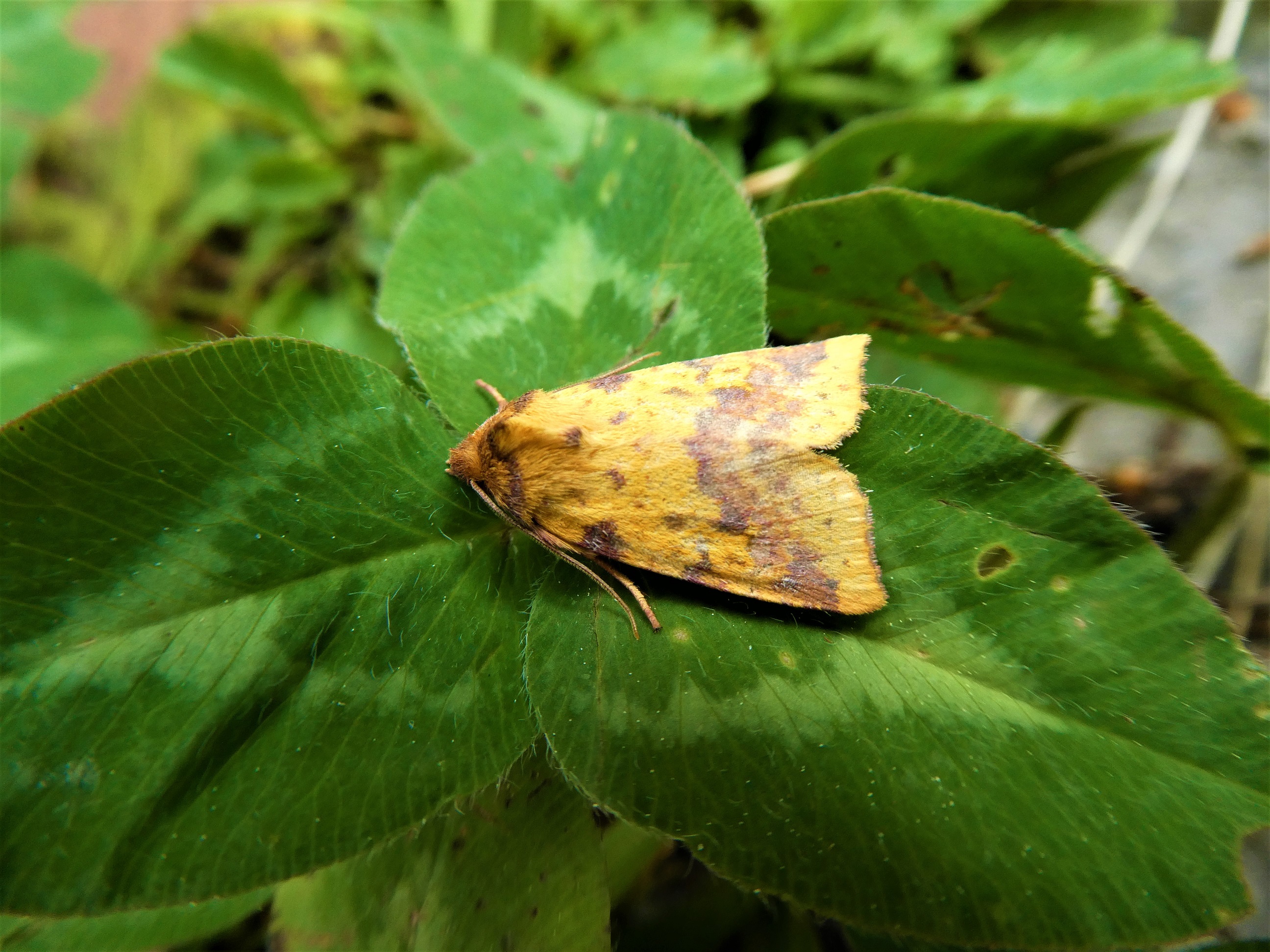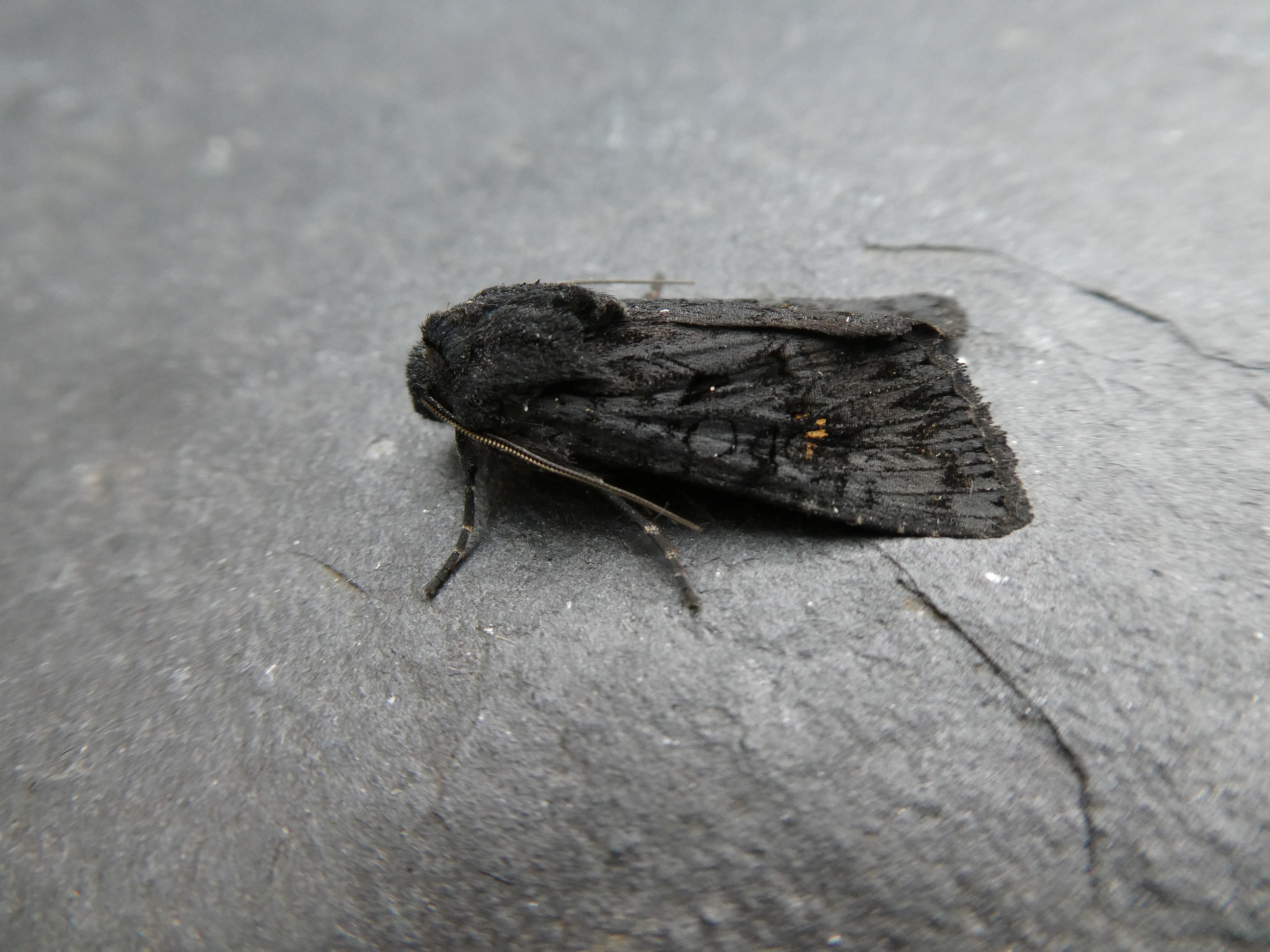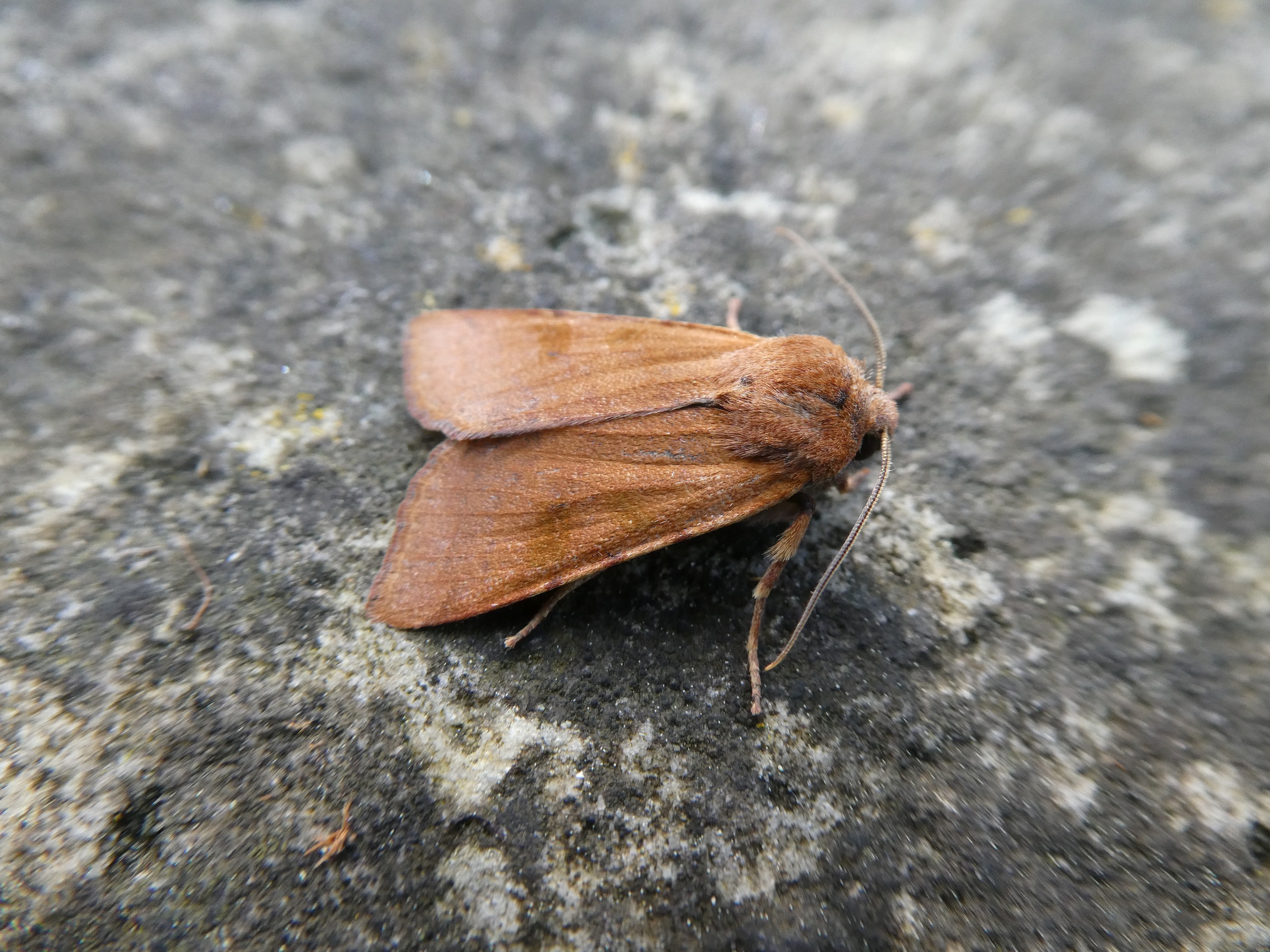September 2019 has seen some beautiful weather allowing butterflies to remain active. As I write on September 21st, Painted Lady butterflies are numerous in flower-rich areas feeding prior to their departure southwards. The continued presence in the Painted Lady is most likely due to the large-scale successive migration events and breeding, leading to a succession of Irish-born Painted Lady butterflies.
After days of concentrated feeding, Painted Ladies leave Ireland. I observed a Painted Lady at Lullybeg on September 20th engage in behaviour that I had never seen before. It had been taking nectar on Devil’s-bit Scabious in a broad sheltered track during sunny, breezy conditions with the temperature at around 21 Celsius. Quite suddenly, it flew vertically upwards at speed climbing until it disappeared from view. This may have been a migration event. Research in Britain in 2009 found that not only does the Painted Lady fly southwards from Britain and Ireland to Europe in autumn, it also migrates at altitude.
It is this high-altitude flight, out of sight of observers that for so long convinced scientists that the entire British and Irish Painted Lady populations merely died off when cold conditions (temperatures below 6 Celsius) arrived in autumn. (Incidentally, the butterfly does not die at 5 or 4 Celsius.) The behaviour I saw at Lullybeg is certainly consistent with the high altitude migration method discovered by Rebecca Nesbit at Rothamsted Research in 2009.
September has thrown up some nice surprises. Butterfly Conservation Ireland member Pat Bell has had two Comma butterflies in his lovely garden in Maynooth, in County Kildare, where the figs he grows have drawn these remarkable butterflies to stay for several days. A stunning newly emerged Comma was observed on Butterfly Conservation Ireland’s reserve at Lullybeg, County Kildare, taking nectar on Devil’s-bit Scabious. This is the first time Commas have been observed on the reserve, bringing the number of butterfly species recorded there over the past three years to 24 species. Tantalisingly, two additional species, the Holly Blue and Clouded Yellow have been seen very close to the reserve.
Clouded Yellows are being seen now-both in coastal areas (see Myrtle Parker’s records for the Cork coast for September 17th) and inland-two were seen in Lullymore on September 20th. Keep a close watch for this beautiful fast-flying and striking butterfly.
The Red Admiral, another migrant, is now appearing in good numbers. It has been greatly outnumbered by Painted Ladies this year; usually, it is the Red Admiral that is the most numerous migrant. The specimens I saw yesterday were in perfect condition, clearly just hatched. Like its more numerous relative, the Painted Lady, Red Admirals will move southwards soon.
Small Tortoiseshells are feeding eagerly too but they have other plans. They are residents; they will stick it out over our long, dull winter in its dry hibernation quarters until better times arrive in spring when it will emerge to breed. The vast bulk of the Peacock population is already in hibernation, with only the occasional individual still feeding. The Brimstone, a member of the white family of butterflies is likewise undercover now with just a small number still feeding. I saw just one, a male, on Friday, and this one fed only skittishly and abruptly roosted at 2:44 pm, in glorious sunshine.
The lovely weather of the past week, borrowed from summer, is now over. The final week of September is set to be unsettled, with rain and wind. We will most likely be saying farewell to most of our 2019 butterflies.
Now onto our autumn moths. We have some autumn moths with soft or muted ‘autumn’ colours. The Pink-barred Sallow is somewhat gaudier but its colours are soft, in tandem with the gentler and sombre colours of the autumn season. Many of these species breed on trees and some of these species are busy mating and egg-laying. Some are feeding up for winter. Like the over-wintering butterfly species, these will breed in spring.
Some moths will do so without males-the female Red-green Carpet moth will mate in autumn and hibernate until warmer weather arrives when it will lay eggs on oak, Common Blackthorn, Rowan and other trees. Male Red-green Carpets die in autumn. The Black Rustic moth looks a little sinister, rather like a cloaked grim-reaper figure. This moth breeds on Tufted Hair-grass, heathers and clovers. The Beaded Chestnut has an autumn leaf colour. Its larva feeds on herbaceous plants and when older it tackled Common Hawthorn and other trees. This species is numerous in wild gardens.
Autumn is a busy time for butterflies and moths. Keep an eye on flowering ivy over the coming weeks for late butterflies and moths. Please do not trim ivy in autumn or winter- it feeds and shelters many species. Trim it back in spring, if necessary. When cutting tall grassland vegetation in the garden, leave some patches for over-wintering insects. Finally, take care when bringing turf or logs indoors to burn over the coming weeks because butterflies often conceal themselves withing log and turf stores to pass the winter. Place any butterfly in a cool, dry space to pass the colder months in safety. Release the butterfly in spring when you see butterflies in the wild. This will typically happen later in March during warm, sunny weather.
